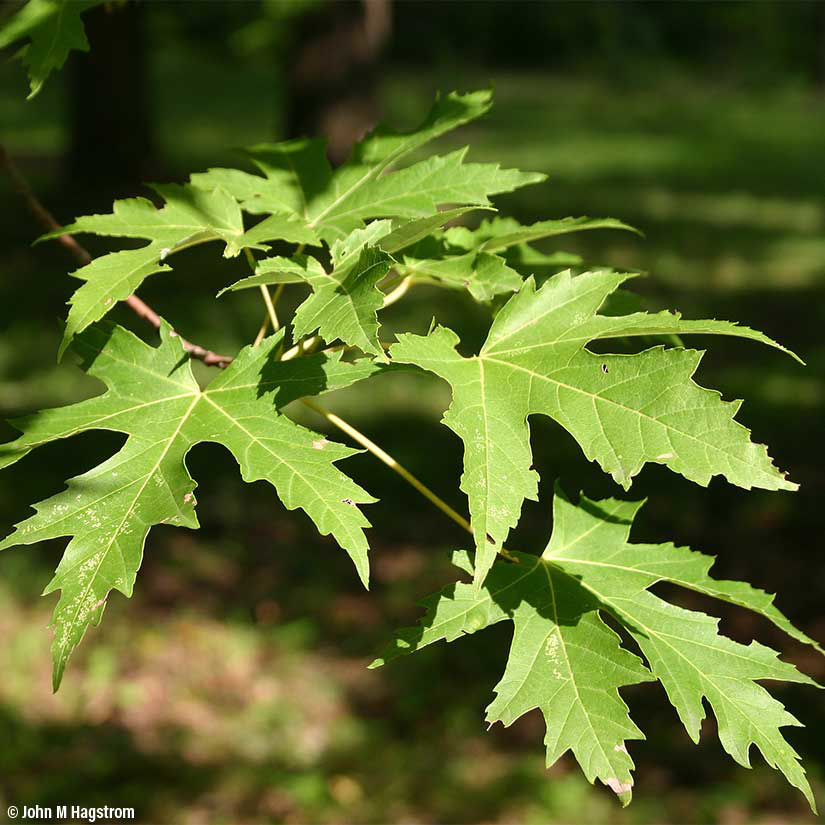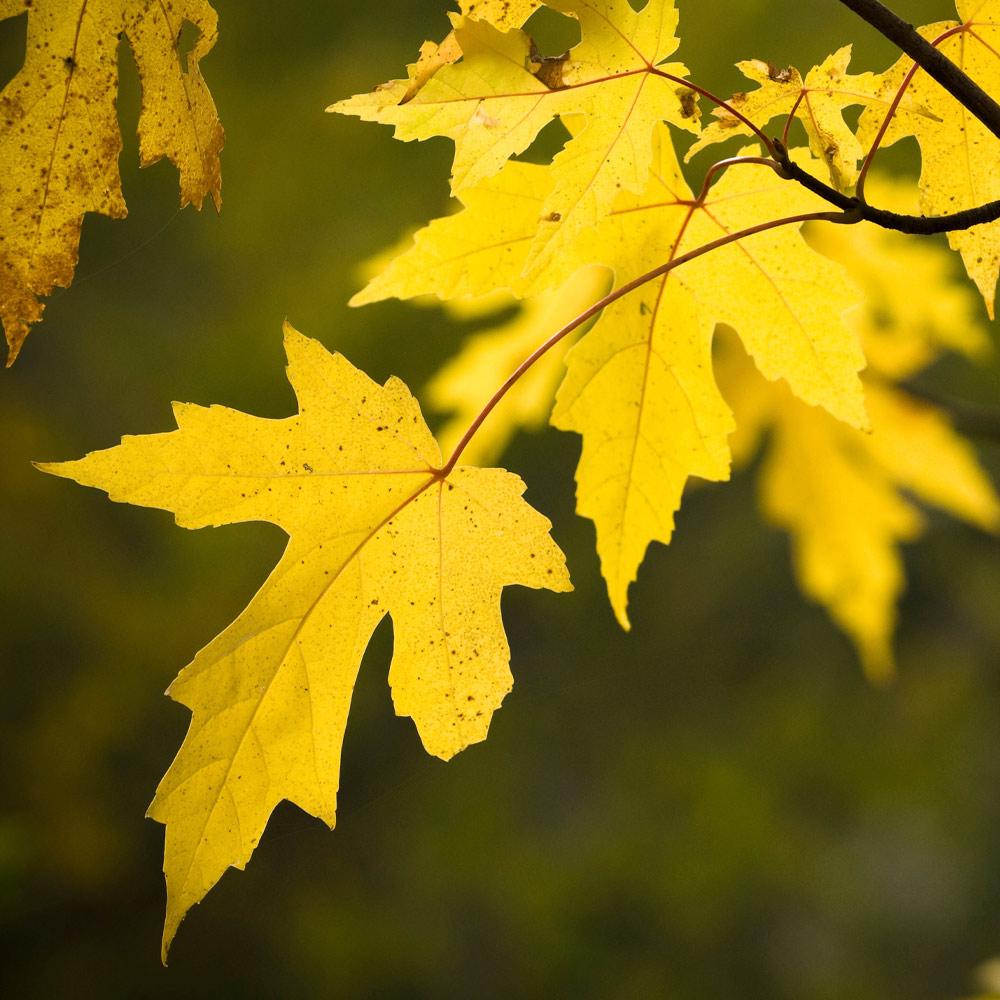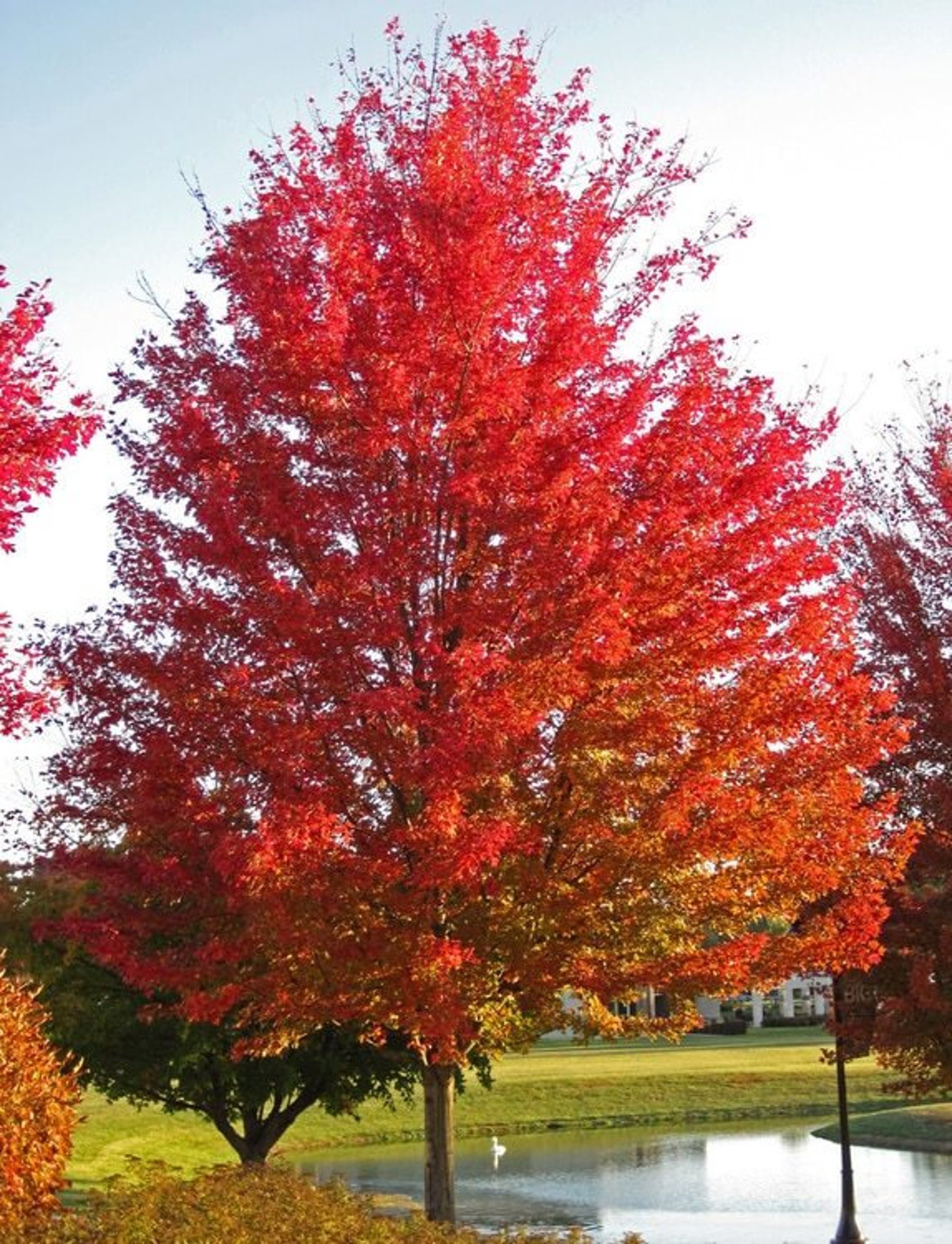

‘Silver Queen’ is a variety that was introduced into commerce in 1966. Specific epithet means sugary in reference to the sweet sap. Genus name is the Latin name for a maple tree. Tree sap is sweet, hence the species name which comes from the Latin word for sugar, but syrups made therefrom are greatly inferior to those made from sugar maple ( Acer saccharum). Deeply 5-lobed light green leaves (to 6” across) have silvery undersides. Mature tree trunks and limbs develop a shaggy appearance as the bark develops long thin flaky scales that exfoliate at the ends. Flowers give way to paired samaras (to 2” long) that mature in late spring. Polygamous greenish yellow flowers bloom in clusters in early spring (March) before the foliage. It is a fast-growing, somewhat graceful tree that formerly was a very popular urban landscape selection for lawns and streets, but has more recently fallen somewhat out of favor because of the proclivity of its weak-wooded limbs to split when stressed by high winds or ice/snow. 1 Silver Maple Ct, Baltimore, MD 21220 1 Silver Maple Ct, Middle River, MD 21220. It is native to eastern and central North America where it typically occurs in moist to wet, sometimes mucky, often poorly drained soils on floodplains, along the edges of streams and rivers and in low woods. The average home sale price on Silver Maple Ct has been 238k. This is one of the largest deciduous trees native to Missouri, typically growing to 50-80’ (less frequently to 100’) tall with a rounded open spreading crown. silver maple: noun a common maple (Acer saccharinum) of eastern North America with deeply cut 5-lobed leaves that are light green above and silvery white below. Insect and disease infestations on Silver maple are generally not a serious problem.Acer saccharinum commonly known as silver maple gets its name from the silvery undersides of its leaves.

Survival and initial growth are dependent upon good site preparation and weed control. One-year-old, bare root seedlings, 18 to 24 inches tall are used in plantings.

In fuelwood and timber plantings, spacing may vary from 6 x 10 feet to 15 x 15 feet. Iron chlorosis, resulting from a lack of available iron in the soil, limits the use of Silver maple in western Kansas.

Silver maple has adapted statewide and grows best on moist bottomland soils. It is routinely harvested and used for furniture, paneling and pallets. NOTE: The terms Silver maple and Acer saccharinum are identical in this text in reality, Acer saccharinum is Silver maple’s biological word. Timber - Silver maple can be grown for timber products. It sprouts vigorously from the cut stump for future wood production. The wood is easy to handle and produces a moderate heat output. Because of its large size, it usually is used for interior rows.įuel wood - Silver maple grows to harvestable firewood size in a short period of time in eastern Kansas. Windbreaks - Silver maple is a good windbreak tree on fertile, moist sites. Bark of mature trees has a red-brown to gray appearance that flakes off with age. The seed is winged, produced in pairs and attached to the stem by a long slender stalk. Leaves are simple, opposite each other on the stem, 4 to 7 inches long with fine deep lobes and sharp teeth along the edge. They are light green above and a light silvery green below. It is a tall, fast-growing tree found on the bottomlands reaching a mature height of 70 to 80 feet and a crown spread of 50 to 60 feet. Acer saccharinum, or Silver maple, is native to the eastern half of the United States and eastern one-half of Kansas.


 0 kommentar(er)
0 kommentar(er)
